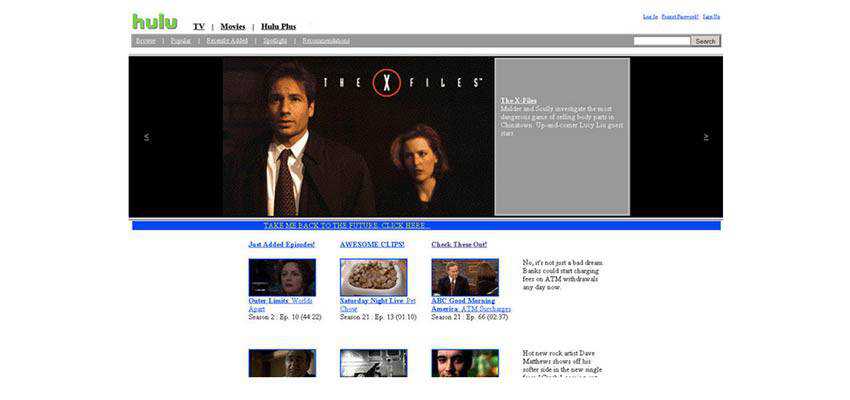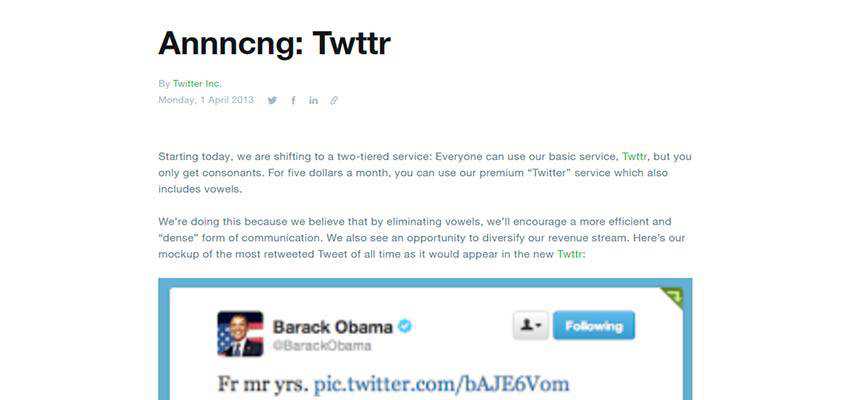It seems like each and every year we celebrate what I like to call “fringe” holidays more feverishly than the last. Just to be clear, my definition of a fringe holiday is one where I don’t get the day off. In my opinion, people get irrationally excited over them (despite the fact that they, too, don’t get the day off).
Halloween is one of the biggest culprits. The costumes and candy are fine for kids, but adults? Well, I’ll save that point for October. Today, I’d like to take on another of these overhyped events: April Fool’s Day. Specifically, how it’s celebrated on the web, where it fits into our modern cultural landscape and (most importantly) how to profit from it.
So, join me as we take a little journey into all the gags and goofs that make April 1 enjoyable – well, for some people. I promise not to trick you!
Welcome Respite or Sad Reminder?
During my childhood (in the much colder, pre-web era), I can recall April Fool’s Day being an opportunity to do something silly at school. For example, putting chalk inside the erasers or trying to convince my teacher that there was a rat running loose in the hallway. Good times.
But lately, the day has grown into something altogether different. Television has become an extravaganza of pranks (although the first famous stunt came back in the 1950s). And companies have gotten in on the act by “launching” ludicrous products, with the web and social media serving as main catalysts.
Today, it seems like just about everyone (famous or not) is trying to pull one over on us. It’s gotten to a point where I generally want to avoid any social media for at least the first half of the day. Otherwise, I risk being inundated with fake products, fake news and a real case of heartburn.
And here’s where it must be asked: With all of the controversy surrounding disinformation being spread online, are April Fool’s Day pranks really necessary? Put another way, is actively participating even good for business anymore?

If You Want to Be a Joker…
The times, they aren’t so innocent. So, it would seem like a bad idea to partake in anything that helps promote something that isn’t true. Especially considering that so many companies and individuals have done the thing to death in recent years.
However, part of me feels like there is still room for a well-done prank. Though, if you’re going to do it, you had better study up:
Know Your Audience
Demographics are important in promoting your services and, funny enough, pranks are no different. Therefore, you’ll want to develop a good sense of what visitors to your site or your social media followers are going to find funny (or tolerable, at least).
Don’t Offend
Of course, not everyone who sees your little joke is going to think it’s funny – and that’s okay. The key thing to remember is that it’s better to give your audience a case of “meh” rather than overtly offend them. Offend enough people and the joke will be on you – only no one is laughing.
Be Obvious
While some of the best pranks are indeed subtle and subversive, that approach may not be the best in these times (see “Don’t Offend” above). Humor is incredibly subjective and there’s risk in doing something that isn’t patently obvious. For big brands, maybe that’s a risk worth taking. For the rest of us, it seems better to just play it safe.
Offer Rewards
Part of the reason for conducting an April Fool’s prank is to build a stronger bond with your audience. And so, if they are going to indulge you on this, maybe you should do something special for them. Offering a small discount on a product or service would seem to be appropriate. Even if they don’t laugh at your joke, at least they’ll gladly save some cash. See? Everybody’s happy.
Memorable Examples
As society has done with so many fringe holidays, we’ve taken a fun little day and have found a way to use it for all it’s worth (and then some). While some of the shenanigans can still be entertaining, the market is, as they say, saturated. That makes it really difficult to stand out.
However, there have also been a number of gags that went over quite well. Let’s take a look at a few standout web and social-based examples that have been used in past years:
Hulu’s Retro Redesign
Even though video streaming service Hulu wasn’t around in the 1990s, it certainly has an affinity for the decade. At least, that was the impression given by their 2011 April Fool’s redesign. Maybe this started a trend, as the 90’s style is all over the place these days.

Play Pac-Man on The Streets with Google Maps
Google tends to have some of the more creative pranks, as you’d expect with their vast resources. Back in 2015, they offered a Pac-Man mode on Google Maps, letting you eat dots all over the screen. They were at it again in 2017, as Ms. Pac-Man made an appearance. Both take advantage of our never-ending love affair with retro games.

Vowel’s Aren’t Free
Twitter’s phony press release back in 2013 declaring that users would need to pay $5 per month in order to use vowels wasn’t so believable. However, it was quite clever. They get extra points for including an incredulous tweet from legendary comic Joan Rivers. It shows that not every prank has to be over-the-top.

A Truly Smart Vacuum
LEGOs are wonderful toys, but they can make for a messy floor. Understanding the struggle, the company created a truly funny meme featuring the “VacuSort”, which can not only pick up your blocks, but sort them by color and type. This is the perfect example of knowing your audience.

Penguins Do Fly
The BBC is known for being behind some incredible nature documentaries. So, when they put a trailer up on their website in 2008 featuring flying penguins, it attracted attention. Maybe this one is a bit more than most of us are willing to do, but brilliant nonetheless.

Very Funny (or Moderately Humorous)
Indeed, April Fool’s Day isn’t as simple as it used to be. Now, everybody’s running around, trying to make their mark with a prank.
Knowing this, maybe it’s best to keep your expectations based in reality. So, instead of hoping for viral superstardom, aim for making a more modest impact on your core audience. This sort of strategy should lead you to do something less outrageous and (hopefully) less likely to make the wrong sort of impression.
What I find interesting is that, even though I complain about the “me too” vibe of the day, I still find something worth remembering every single year. So, maybe it’s not as bad as I’ve convinced myself. Perhaps I’m (temporarily) cured of my grumpiness.
Now, if you’ll excuse me, I have to go out and look for a fake rat to place in the hallway.
Related Topics
Top